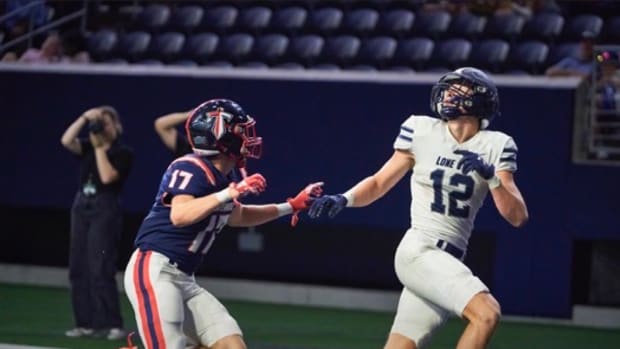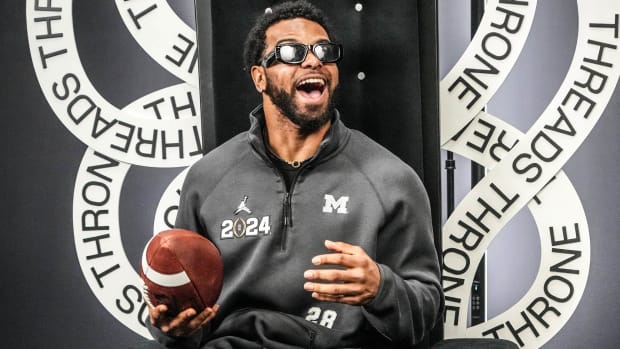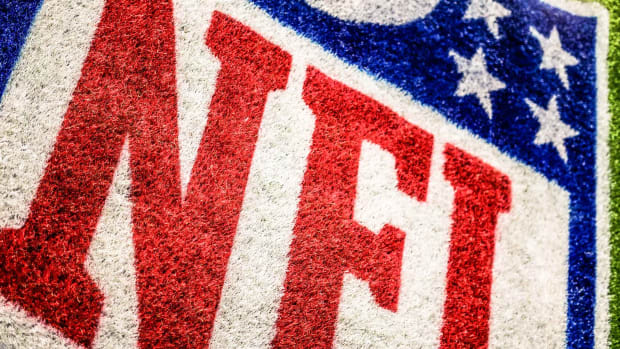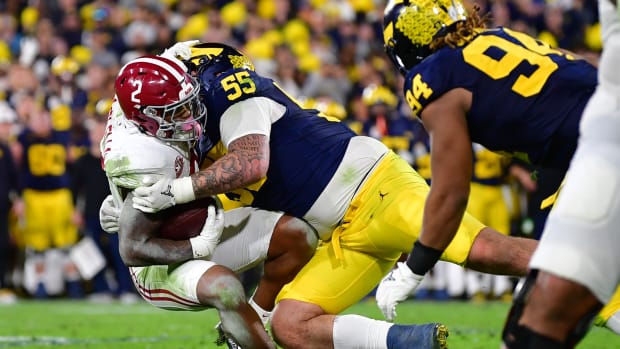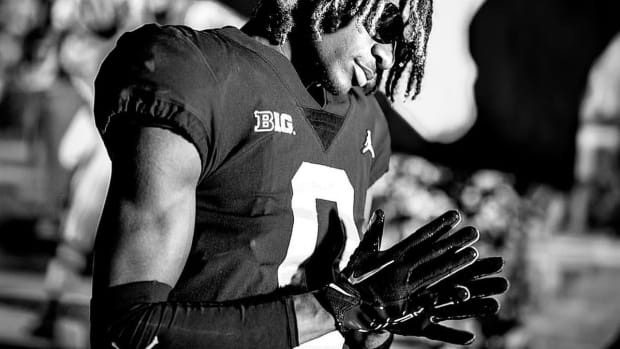Questions We're Asking Following Michigan's Win At Illinois
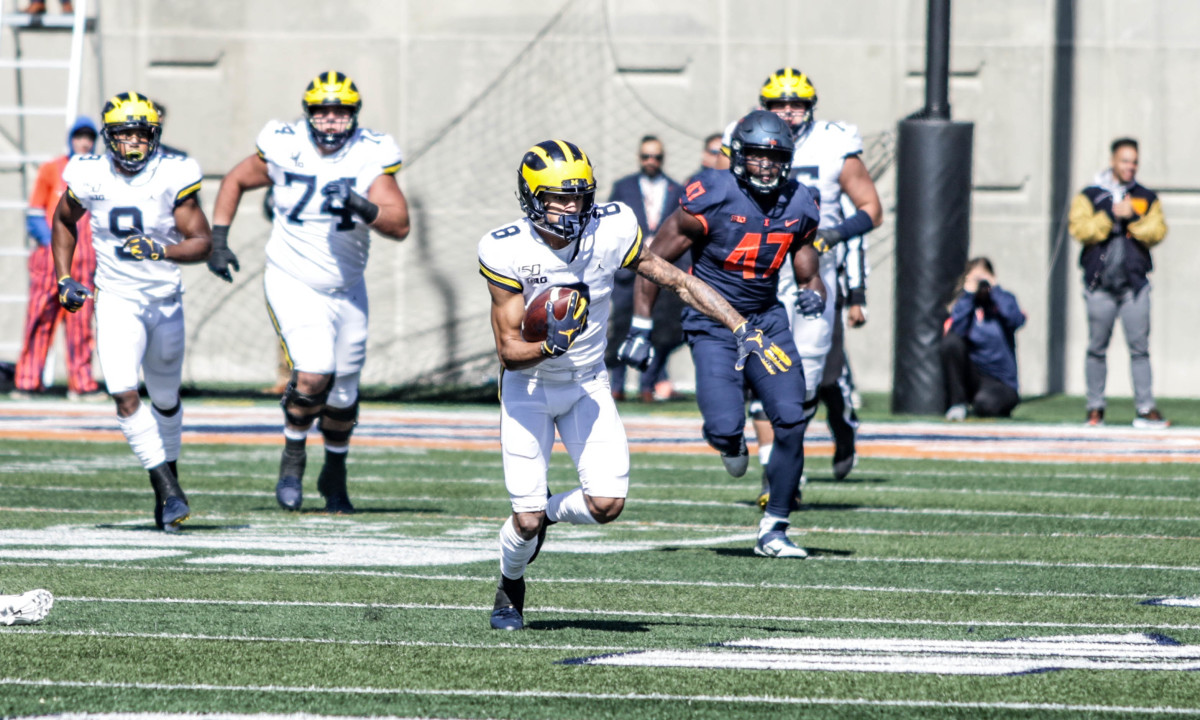
How concerning is the step backward the defense took?
Michigan actually moved up in the national rankings in total defense after holding Illinois to 256 yards. The 3.56 yards per play the Maize and Blue allowed was their second-best effort of the season (after Rutgers), so statistically speaking, the Wolverines actually played well.
But they didn’t pass the eye test, surrendering scoring drives (three touchdowns and a field goal) on four consecutive possessions for the first time all year. Wisconsin didn’t even do that to the Maize and Blue defense.
Those drives were not the result of one or two bad plays, but a multitude of errors and ineffectiveness: “big” plays allowed of 18, 19, 20, 23 and 35 yards; five penalties, including a 15-yard facemask, a 10-yard defensive holding and pass interference; and allowing five third-down conversions.
Incredibly, for a team that recorded 12 tackles for loss in the game, Michigan did not have a single stop behind the line of scrimmage during those four drives.
In other words, for a 19-minute stretch from the end of the second quarter through the beginning of the fourth quarter, the Wolverines did not make a positive play defensively, while at the same time committing brutal mistakes.
There was regression from the Iowa game. However, Michigan also played outstanding defensive football. Over Illinois’ first seven possessions, U-M allowed just 23 yards of offense. On Illinois’ final three drives after closing within three, 28-25, the Wolverines forced two turnovers and held the Illini to negative-21 yards of offense.
So, there was good and there was bad.
Michigan will give up some points to Penn State next Saturday. What the Maize and Blue cannot have is a stretch in which they look as meager and hapless as they did against Illinois. Yesterday, that was for 20 minutes and it almost cost the Wolverines a win.
In Madison, it was the first 40 minutes, as the Badgers scored touchdowns on five of their first seven possessions. And it did cost Michigan a win.
Did the Michigan offense make enough strides to beat Penn State?
The Wolverines posted a season high in total yards (489) and had 6.99 yards per play (second only to the 7.0 against Rutgers). It was the top rushing performance of the season for the Maize and Blue (295 yards and 6.2 yards per carry, improving on averages of 128.4 yards rushing and 3.5 yards per attempt).
U-M’s 169.07 pass efficiency rating was also its second-best mark of the year, with QB Shea Patterson posting an interception-free game for the first time since Week 2. He did complete just 50.0 percent of his pass attempts.
Like the defense, there was some good but the bad offensively – five straight possessions without a score, including three straight 3-and-outs, two turnovers, and three red-zone drives that ended without points – seemed to overshadow many of the positives.
What Michigan was looking for was a consistently dominant effort on that side of the ball. It didn’t happen, but if you want to look at the glass half full, here it is: after Illinois made it 28-25, U-M drove 79 yards on 10 plays, as Patterson completed 3 of 4 attempts for 35 yards (including a TD) and ran the ball three times for 20 yards (picking up two first downs).
Patterson looked like a gamer the moment Michigan needed its quarterback the most. That was reminiscent of the Northwestern game last season and the Michigan State game last year, and something we really haven’t seen from the senior signal-caller all of this year.
Patterson has been inconsistent and underwhelming for large swaths of the 2019 season, but if he can find that confidence and play with savvy and mental toughness, he could still be the galvanizing force the Wolverines need to pull an upset over the Nittany Lions.
Will the Wolverines’ road woes psychologically beat U-M before it ever takes the field in State College?
The elephant in the room returns this week as Michigan attempts to buck a negative trend for the Wolverines under Jim Harbaugh: U-M is 1-6 in road games against ranked teams since 2015, including a 35-14 defeat to Wisconsin earlier this season in which the Maize and Blue trailed 28-0 at the half.
Too often, Michigan has looked shaken early in a road contest, the environment snuffing out any confidence the Wolverines might have had. And when the going has gotten tough in the first quarter, U-M has folded.
This week, the narrative of Michigan's road woes will return from the local and national media. The national pundits and opposing fans will mock the Wolverines and the story will only change if the Maize and Blue rewrite it.
Michigan fans are leery. According to a poll I posted on Twitter earlier Sunday, 40 percent of more than 1,600 votes have no confidence in U-M’s chances to beat Penn State. Another 37 percent rate their confidence at a ‘5’ or lower, so more than 3/4 of Wolverines are expecting their team to lose.
And why shouldn’t they? With the exception of a victory at Michigan State in 2018, the Maize and Blue have dropped every other road game against a ranked opponent during Harbaugh’s career, and have often looked bad doing it. The last time U-M played in State College (coincidentally also at night in front of a ‘White Out’ crowd), Michigan trailed 14-0 after one quarter and lost 42-13 in 2017.
These fans are shell-shocked.
If the team is too, next week’s game is over with before it begins.
And Penn State, even at 6-0, is no juggernaut. The Blue and White have looked so-so in their only two matchups against real foes - Pittsburgh (389 yards in a 17-10 win) and Iowa (294 yards in a 17-12 win). This is a road game that the Wolverines could win, as long as they are mentally tough enough.
Can Harbaugh finally push the right buttons, have his team prepared for the hostility, and play its best football on offense and defense necessary to win and start a new streak of winning on the road against ranked opponents?
There is always hope, though it fades with every demoralizing defeat.

